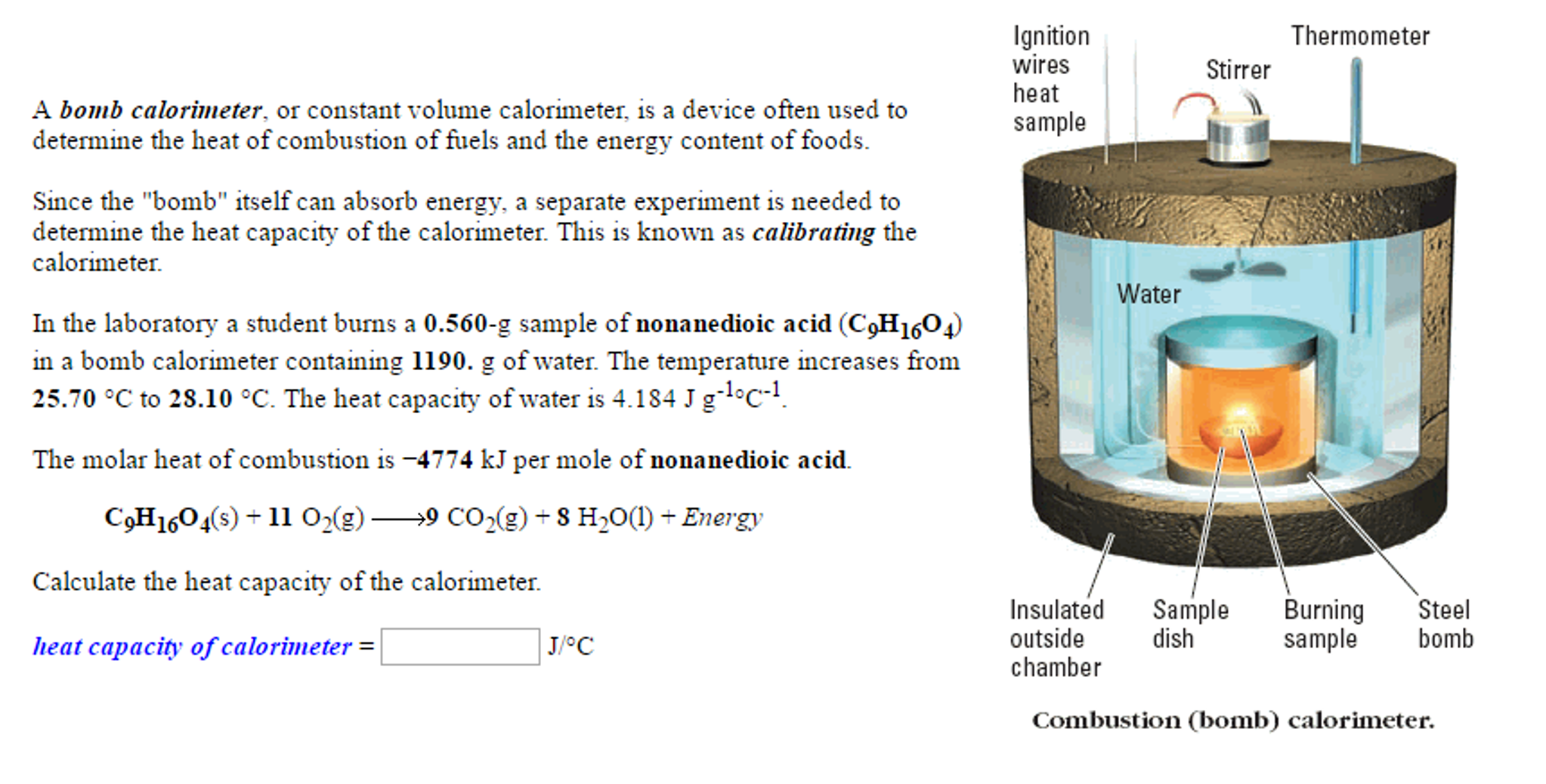
How do you do the coffee cup calorimeter experiment? The temperature of the water increased to 31.8°c.

The bomb has a fixed mass and specific heat.
Coffee cup calorimeter experiment. Place a styrofoam cup on a magnetic stirrer. What is the purpose of the coffee cup in a coffee cup calorimetry experiment? Background in calorimetry, the heat flow that accompanies a physical or chemical process is measured.
What was the change in enthalpy for the dissolution of this compound? After the reaction, the temperature of both substances is 31.3 oc. Experiment 2 coffee cup calorimetry objectives to simulate the heat transfer between materials with various specific heats.
Essentially, the heat measured in the device is equivalent to δh, the change in enthalpy. Assume that the specific heat of the. Give your answer in units of joules per gram of compound.
Assume that the specific heat of the. What is the purpose of the coffee cup in a calorimetry experiment? The calorimeter is a device used in the laboratory to measure.
Stirring rod since the cup itself can absorb energy, a separate experiment is needed to determine the heat capacity of the calorimeter. The hcl had an initial temperature of 44.6 oc and the water was originally at 24.6 oc. The temperatures and weights of the liquids are recorded, then the two are mixed in one of the cups and the final temperature t f is observed.
To calculate the specific heat capacity of different materials. A coffee cup calorimeter is used to measure enthalpy changes in chemical processes, giving δh. The bomb has a fixed mass and specific heat.
Be careful not to cut it too small. Give your answer in units of joules per gram of compound. Give your answer in units of joules per gram of compound.
The temperature of the water increased to 31.8°c. A styrofoam cup makes for a good adiabatic wall and helps keep all the heat released or absorbed by the reaction inside the cup so we can measure it. The final temperature of the solution was 31.8°c.
When energy is transferred as heat from the surroundings to the system, δh is negative. How do you do the coffee cup calorimeter experiment? We have the thermometer🌡️ and the reaction mixture, which are self explanatory, along with the stirrer, which stirs the reaction mixture.
As such, the heat that is measured in such a device is equivalent to the change in enthalpy. Next, cut the cardboard into a circle that fits snuggle on top of the cup. What is the purpose of the coffee cup in a coffee cup calorimetry experiment the styrofoamtm of the coffee cup acts as a catalyst for heat transfer the coffee cup adds heat to the experiment the soft coffee cup is safer to work with than a glass beaker the coffee cup insulates the experiment minimizing?, the coffee cup insulates the experiment, minimizing heat loss.
If possible, cut it as small as you can. What was the change in enthalpy for the dissolution of the compound? It�s important that the cup is sealed for the experiment.
Put in one styrofoam cup a little inside the other and place it up against the calorimeter. A styrofoam cup makes for a good adiabatic wall and helps keep all the heat released or absorbed by the reaction inside the cup so we can measure it. Calculate how much heat the water lost or gained.
Lid, and at the same time, reduces the amount of energy that is exchanged in between the water and the surrounding air, both of which are valuable factors. Since energy is neither created nor destroyed during a chemical reaction, the heat consumed or produced in the reaction, q reaction, added to the heat lost or absorbed by the. The rest of the calorimeter is meant to insulate the sample, meaning that heat cannot come in or out of the system.
What is the purpose of the insulated styrofoam cup in a calorimetry experiment? In the coffee cup calorimeter experiment that heat given by. To complete this step, cut the cardboard up to align with snuggling over the cup with your exacto knife.
Analysis of the heat flow is a bit more complex than it was for the coffee cup calorimeter because the heat flow into the metal parts of the calorimeter must be taken into account: The evaporation of water is an exothermic process. Secure a thermometer to a clamp on a ring stand so that the thermometer extends through the lid and into the cup without touching the magnet.
Add a magnet and cover the cup with a lid. Of hot metal to a coffee cup calorimeter. The final temperature of the solution was 31.8°c.
The most basic experiment involves two of these cups with a measured amount (w 1) of hot water at temperature t 1 in one cup and a measured amount (w 2) of cold water at temperature t 2 in the other cup. What was the change in enthalpy for the dissolution of this compound? Of the products and the reactants qmetal + qcal = qsystem = 0 (6) respectively.
A coffee cup calorimeter is a constant pressure calorimeter. Take one styrofoam cup and place it inside the other. A.was the reaction exothermic or endothermic?
If you want to perform an experiment, you must seal the cup. The coffee cup insulates the experiment, minimizing heat loss to the environment. The combined cup, magnet, lid, and thermometer is your calorimeter.
Thermometer in the laboratory a coffee cup calorimeter, or constant pressure calorimeter, is frequently used to determine the specific heat of a solid, or to measure the energy of a solution phase reaction.